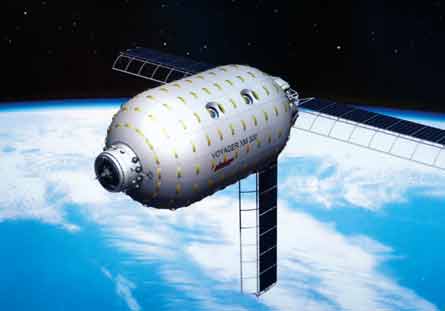Bigelow Aerospace's Genesis II inflatable spacecraft, to be launched in January, will carry cockroaches, scorpions and ants into space and have more cameras and biological specimen boxes than its predecessor, Genesis I.
Following the success of Genesis I, launched on 12 July, the Las Vegas-based company is expanding its study of animals as it wants to see multiple generations live aboard the spacecraft. Genesis II, like its predecessor, will test avionics, seal technology, oxygen tanks and inflation-modulating actuator valves. Genesis II will also use Kevlar membranes to restrain inflation, and layers of specialist material to limit interior exposure to radiation, aid thermal management and keep air in.
"Our [Genesis I] data shows we're as good, if not better, than the International Space Station in leaking air," says company founder Robert Bigelow. Genesis I is expected to operate for 13 years in its current orbit, but the data suggests it would take 150-200 years for all its air to leak out.
 |
|---|
| Future Bigelow spacecraft may have Russian and US docking systems |
Bigelow may use US and Russian docking systems on future models of its space complex and, if Genesis II is successful, could accelerate plans to launch a full-scale spacecraft, currently scheduled for 2012, although it would require a rocket larger than the Kosmotras Dnepr booster used to launch Genesis I and II.
Bigelow's Las Vegas command and control centre has UHF, VHF and S-band antennas. By year's end, Bigelow will place 6.1m (20ft) S- and X-band dish antennas in Hawaii and Alaska and by 2009 the company should have nine 6.1m dish antennas around the world. X-band dishes are necessary for rapid video data transfer.
Read Rob Coppinger's blog on how hotelier Robert Bigelow has achieved a significant success with his Genesis I spacecraft in an industry that sees too many Powerpoint presentations and too little operational hardware
Source: Flight International























